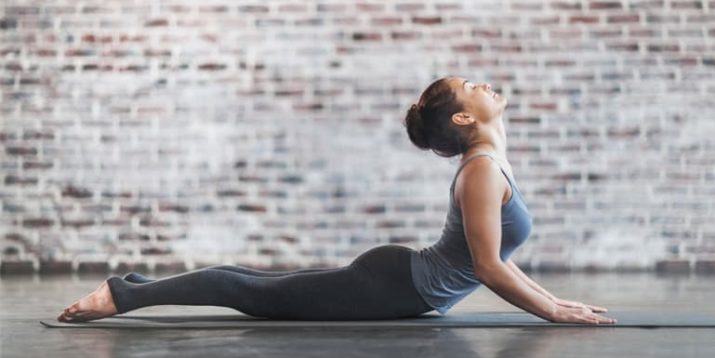4 Workout Recovery Methods That Feel More Like Pampering

Little-known fact: You don’t become fitter in the gym. It’s only during the periods between workouts that your waist shrinks and your muscles grow stronger and more defined. That’s why many trainers call workout recovery the most overlooked part of fitness.
You likely already know a few of the keys to optimizing recovery: Getting at least seven hours of shut-eye a night, consuming protein at every meal, and giving yourself at least 24 hours between workouts. These methods help return the body to a point at which it can match or exceed its performance in a previous exercise session or competition, normalizing things like heart rate and blood pressure, replenishing energy stores, and restoring cellular enzymes.
But these aren’t the only ways.
The four additional methods below might feel like pampering, but performing any (or all) of them between workouts can help you not only to recover faster, but to also tap into greater strength, power, stamina, and energy.
4 Workout Recovery Methods That Feel More Like Pampering
1. Massage
Having a pair of expert hands work the knots and adhesions from your muscles not only feels amazing, but can also reduce post-exercise soreness and inflammation, speeding recovery, according to a study by Canadian researchers. That same study found that it can also boost activity in mitochondria, enhancing cellular energy production.
Need another reason to shell out money for a professional rubdown? Here are four: Research also shows that massage can also reduce anxiety and back pain, improve sleep quality, and lower blood pressure. Like a little pain with your pleasure? Hit up a deep tissue practitioner or a Rolfer.
Prefer something soothing? Go for Swedish massage or a hot rock treatment. Prefer to hold onto your cash? Invest in a foam roller, and massage yourself. Give each muscle group at least five rolls, starting with your calves, and working your way up your body.
2. Stretching
Nothing fancy about it: Get down on the floor, assume a position that lengthens an area that needs attention, and hold it for a minute or two. It’s a do-anywhere, any time, absolutely free recovery modality that’s proven to reduce soreness, relax tight muscles, and improve mobility.
“Many people are too rushed to include stretching after their workouts, making it a perfect recovery day activity,” says ISSA Elite Trainer Angelo Poli, co-owner of Whole Body Fitness in Chico, California. “Take your time, sink into each stretch, and enjoy it.”
Need some inspiration? Check out our five favorite total body stretches. Perform them after your workout, before bed, when you wake up in the morning, while you watch TV—anytime that’s convenient. The only time you don’t want to perform static stretches is before you work out, and the reason is the same as why you should perform them afterward: It relaxes your muscles instead of priming them for action. Indeed, a study by Austin State University researchers showed that static stretching prior to exercise can temporarily inhibit strength, power, and stability.
3. Gentle Yoga
If you’ve never tried this ancient, mobility-boosting form of exercise, you should — especially if you enjoy activities that cater to the body, mind, and soul. A pair of studies from 2005 suggest that yoga is effective in reducing both anxiety and depression, while other research shows that it lowers blood pressure and blood sugar, and slows aging by increasing DNA-protective telomerase. Yet another study indicates that a consistent yoga practice can improve bone density and prevent fractures in older practitioners.
For recovery purposes, stay away from Bikram, or “hot” yoga, and more athletic styles like Ashtanga Vinyasa and Kundalini. Instead, try Hatha, Yin, or a “recovery” class at a traditional studio on your off days. Prefer to practice at home? Check out Beachbody’s video series 3 Week Yoga Retreat where four yoga experts guide you through the foundations of yoga.
4. Feldenkrais
Practitioners of this oddly named, gentle movement system (which resembles a hybrid of massage, physical therapy, and meditation) can be tough to find, but it’s worth the effort. The results are often immediate — a single session with a practitioner can relieve muscle tension, undo dysfunctional movement patterns, and leave you moving with more ease and less pain.
By focusing on retraining the brain and nervous system with small, specific movements, rather than squeezing your muscles and joints, Feldenkrais has been shown to improve balance, reduce chronic pain, and increase movement efficiency.
In a one-on-one session, a practitioner moves a student’s limbs, trunk and head in subtle ways to assess where the client is holding tension, then guides him or her through more functional movement patterns. In group classes, an instructor guides students verbally through a series of movements that resemble crawling, rolling, and sitting up. They may look infantile, but the results are powerful.
“Many people develop movement habits that tighten the lower back, shoulders, and hips,” explains practitioner Roland Mathews, GCFP, of Encinitas, CA. “Feldenkrais relieves those areas of tension, helping the entire body to work more smoothly.”
